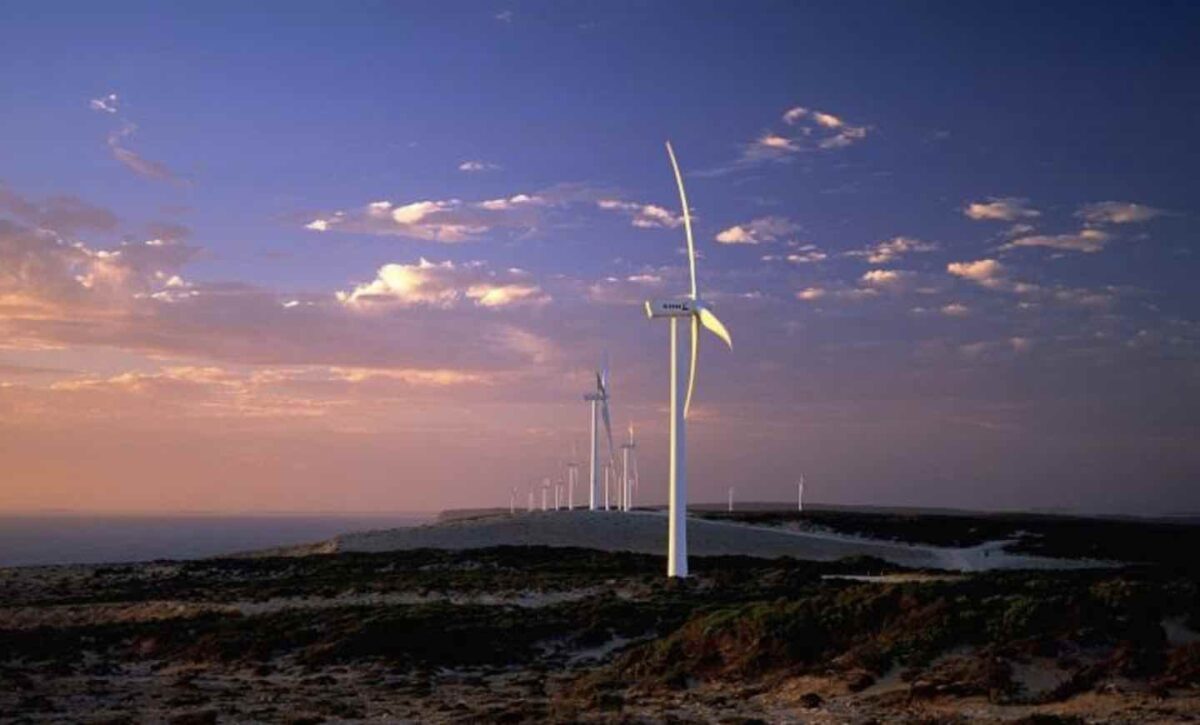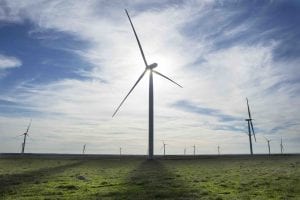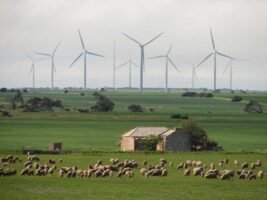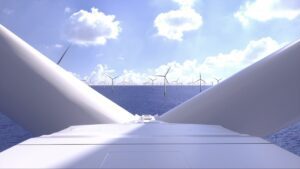The first of Australia’s wind farms are nearing the end of their operational lives, but with old farms sitting on some of the best sites, the obvious choice for operators is to repower an existing project.
Repowering is when old turbines are replaced with new ones, as opposed to decommissioning which is when a site is returned to its previous state and use – usually farmland.
European data indicates the rewards are worth it, with repowering able to on average triple a site’s capacity while reducing the number of turbines by a quarter.
But it’s not as simple as it looks. Complexity comes in the form of significant costs, renegotiating new connection agreements with the Australian Energy Market Operator (AEMO), and regaining landowner and community buy-in for bigger turbines.
“Repowering any wind farm is a complex process and generally speaking could be viewed as a completely new project. It’s not a matter of just installing new turbines at the existing site,” Dmitry Danilovich, Acciona Energia director of development, told RenewEconomy.
“Repowering a site is really like starting a new project. You have to go through a re-permitting process with the planning and environmental authorities, as well as updating, reviewing and reapplying for your connection agreement.
“Since the site first started operating, a lot will have changed in the decades since, and you need to work out what capacity can be connected to the grid.”
And before all of that, a company has to find out whether landowners want to continue leasing their land for another 30 years.
“At the end of the day, the landowners need to make a decision on hosting larger turbines than those being decommissioned, and we explain the size and footprint of a proposed wind farm to them,” he says.
At the other end, the operator may also have to renegotiate fresh power purchase agreements.
Australia’s elderly wind farms
The average age of Australian wind farms is approaching 15 years, according to the Australian Energy Market Commission (AEMC), but a handful have crossed or are close to their 20-30 year operational lifespan.
No Australian wind farm has yet been repowered. The cheaper option is to eke out a little more life using advanced sensing tools to avoid component failures and predictive maintenance to keep turbines going a little longer.
One of the *National Electricity Market’s first grid-connected wind farms is Crookwell 1 in NSW, in 1998, which was bought by Tilt Renewables. The eight, 600kW turbines are still running.
[Ed’s note: Western Australia lays claim to the nation’s first commercial wind farms, starting with the Salmon Beach Wind Farm near Esperance, with six turbines that operated for nearly 15 years. The asset was decommissioned in 2002 due to the age of the turbines and urban encroachment. In 1993, it was superseded by the nine-turbine Ten Mile Lagoon wind farm, west of Esperance.]
“Commissioned in 1998, Crookwell was the first wind farm in New South Wales and utilises 8 Vestas V44-600 kW wind turbines, and was a beacon of what was possible as we commenced the energy transition.
“The wind turbines continue to be highly reliable, generating clean, renewable energy. Our intent remains to continue operating Crookwell Wind Farm as long as the turbines maintain their current level of reliability,” a Tilt spokesperson told RenewEconomy.
“Repowering remains an opportunity and consideration across our portfolio of 1.3GW.
Any consideration for repowering would be consistent with any of Tilt Renewables’ development activities, including the relative merits of network capacity, approvals, community support, etc. At this stage no decision has been made regarding repowering of Crookwell WF.”
The 2000s saw the wind industry hit launch speed with the start of the Renewable Energy Target in 2001.
Western Australia began with Albany in 2000; NSW had the Blayney wind farm that same year followed by Hampton wind park in 2001 and Capital wind farm in 2009; while Victoria had the Codrington Wind farm in 2001, Toora wind farm in 2002, Wonthaggi in 2005 and Waubra in 2009. South Australia’s count included Cathedral Rocks and Canunda in 2005.
New tech levels up the complexity
Among the challenges of repowering a wind farm are the changes in technology over the last 30 years.
The bigger blades mean a new layout, as bigger machines need to be placed further away from each other, and it also means the tower must also be replaced with a bigger one.
They may also introduce grid constraints as the extra capacity from a similar number of bigger turbines may not be able to be connected to the network in that location.
Danilovich says new foundations are required for larger turbines on taller towers.
“New turbines all need to meet specific Generator Performance Standards, as well as other rules, which means it’s not as simple as swapping turbines out. Using newer, bigger or more advanced turbines also have different environmental and planning considerations,” he says.
AEMO’s 5.3.9. process to alter a generating system is stringent, requiring an amendment of connection agreement even for a change of brand even if the turbine itself is exactly the same. Companies wanting to repower a site with new high tech machines will need a new agreement entirely, to take into account the higher capacity, changed technology, and altered supporting infrastructure.
New planning permits are needed for bigger rotors and higher hub heights, which will require new environmental studies such as noise assessments.
And then there is the cost of removal and assembly. One source told RenewEconomy the cost of the cranes and crew to remove a single turbine is between $300,000 and $400,000. To put a new turbine up costs between $400,000 to $500,000.
Lessons from the wind repower-house
The leader in the repower field is Europe where a lack of land means good sites must be reused. Some 170 projects in Europe have been overhauled at the end of their operational life, according to lobby group Windpower Europe.
The most recent is the Elster wind farm in Dresden, Germany, where 50 turbines are being replaced by 16 modern versions with a total capacity of 105.6 megawatts (MW).
The company behind the Elster construction and planning processes, VSB Neue Energien Deutschland GmbH, says the repowered farm will generate six times more power.
Last year a consultancy put a figure on the value of repowering older wind farms in Europe, saying a quarter of the region’s 2030 energy needs can be met by repowering wind farm alone.
“Europe must install 250 GW of wind power by 2030 to meet its goals*, while repowering emerges as a viable option as it can represent additional 65 GW up to 2030,” said Sia Partners in a 2022 report.
“Dismantling the old windfarms is also a business opportunity for the upcoming years, as wind turbines repowering could generate up to 30 million tons of recoverable waste by 2030 in Europe.”
Planning for repowering is a long process, says UK consultancy FieldFisher, which recommends starting preparations as early as a decade into a wind farm’s operational life.
And while repowering has been a growing industry since 2010, it took until 2021 for the German government, the acknowledged leader in Europe in the repower field, to change regulations to make it simpler for companies to do — an indication of the uphill battle awaiting Australian wind farm owners.
And what about the old turbine parts?
Another major question facing wind farm developers is finding a sustainable way to dispose of old wind turbine parts.
The fibreglass and resin blades of wind turbines have proven particularly difficult to break down or repurpose, with many ending up in landfill at the end of their life cycle, leading to concerted efforts to find ways to recycle them.
But efforts are underway to solve this problem.
This time last year, the Zero wastE Blade ReseArch (ZEBRA) consortium in Europe produced a prototype of a world-first 100 per cent recyclable wind turbine blade, designed and built by LM Wind Power – a subsidiary of the renewables arm of GE.
The prototype turbine blade was made using thermoplastic resin and glass fabrics, all of which can be chemically recycled, where the resin is “depolymerized” – a process that separates the fiber from the resin and recovers the materials to be reused.
In the US, scientists last August created another kind of turbine resin which they say can be continuously recast into new blades, or other materials including plastic, car taillights, kitchen countertops, and even nappies and candy.
And in January of this year, a Denmark-based company Continuum announced plans to build six industrial-scale wind turbine blade recycling factories across Europe, with plans to begin taking end-of-life blades by the end of the year.










